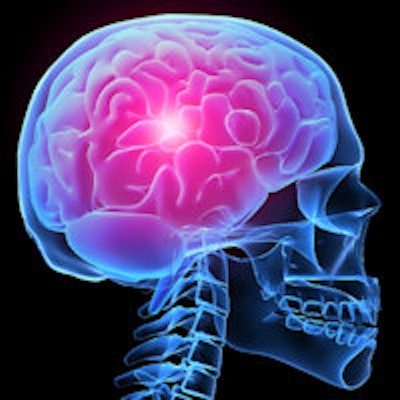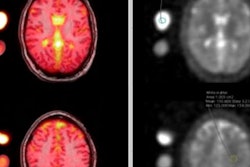
Despite guidelines to control the use of CT and MRI for headaches and migraines, neuroimaging procedures are overused and cost an estimated $3.9 billion between 2007 and 2010, according to a study published online March 17 in JAMA Internal Medicine.
Neuroimaging was ordered for 12% of outpatient headache visits over the four-year period and accounted for approximately $1 billion a year in healthcare costs, researchers from the University of Michigan Health System found.
Lead author Dr. Brian Callaghan and colleagues attributed the use of CT and MRI for diagnosing headaches and migraines to patient demand and defensive medicine on the part of physicians.
"Optimizing headache neuroimaging practices should be a major national priority," they wrote (JAMA Intern Med, March 17, 2014).
Sources of headaches
For the most part, headaches are caused by benign conditions, Callaghan and colleagues noted. Only 1% to 3% of patients undergoing neuroimaging exams for chronic headaches show significant abnormalities, according to past studies.
"However, little is known about recent headache neuroimaging utilization, associated expenditures, and temporal trends in the U.S.," the authors wrote.
The group used the National Ambulatory Medical Care Survey (NAMCS) to gather information about all outpatient office-based care in the U.S. NAMCS details geographic regions, physician practices based on specialty, and patient visits within each practices.
Callaghan and colleagues also reviewed all headache visits for patients 18 years or older through the Healthcare Cost and Utilization Project (HCUP) classification system.
The researchers then estimated the proportion of headache visits from which a CT or MRI was ordered from 2007 through 2010 based on all headache visits, all migraine visits, and visits with a primary diagnosis of headache or migraine. Neuroimaging payments were calculated using the Medicare Physician Fee Schedule (MPFS).
Headache office visits
There were a total of 51.1 million headache visits during the four-year period, including 25.4 million office visits for migraine headaches, the group found.
Of all visits, 88% were by patients younger than 65 and 78% were by women. Primary care physicians received the most visits (55%), followed by neurologists (20%), other specialists (13%), and nonprimary care generalists (12%).
Neuroimaging with CT or MRI was conducted in 12.4% of all headache visits and in 9.8% of migraine visits, according to Callaghan and colleagues.
"Headache neuroimaging utilization was higher if the headache or migraine diagnosis was listed as the primary diagnosis for the visit," the authors wrote. "Total neuroimaging expenditures were estimated at $3.9 billion over four years, including $1.5 billion from migraine visits."
The burgeoning use of CT and MRI for headaches was not confined to the 2007-2010 timeline of the study. The researchers also found that neuroimaging utilization for all annual visits related to headache increased from 5.1% in 1995 to 14.7% in 2010.
| Neuroimaging for headache or migraine | |||||
| Diagnoses | Visits (in millions) | Imaging payments (in millions) |
|||
| Total | MRI | CT | MRI or CT | ||
| All headache | 51.1 | 7.6 | 5.1 | 12.4 | $3,910 |
| All migraine | 25.4 | 6.0 | 3.8 | 9.8 | $1,530 |
| Primary headache | 29.2 | 10.1 | 6.2 | 15.9 | $2,910 |
| Primary migraine | 16.1 | 7.2 | 4.5 | 11.7 | $1,160 |
"Since 2000, multiple guidelines have recommended against routine neuroimaging in patients with headaches because a serious intracranial pathologic condition is an uncommon cause," the authors wrote. "Consequently, the magnitude of per-visit neuroimaging use found in this study suggests considerable overuse."
Guidelines have not curtailed the use of neuroimaging because patient demands and defensive medicine may be driving referrals for CT and MRI scans, Callaghan and colleagues speculated.
If so, campaigns such as Choosing Wisely, which encourage patients to ask their doctors about the necessity and risk-benefit ratio of tests, "may be more effective than guidelines alone," they added.
In addition, preauthorization of neuroimaging exams or shifting some of the cost to patients could help reduce the frequency of CT and MRI scans.
"Given that headache neuroimaging is common, costly, and likely substantially overused, interventions to curb utilization of these tests have the potential to substantially reduce healthcare expenditures while improving guideline concordance," Callaghan and colleagues concluded. "Therefore, optimizing headache neuroimaging practices should be a major national priority."




















